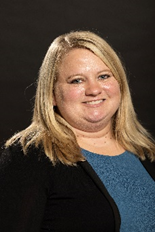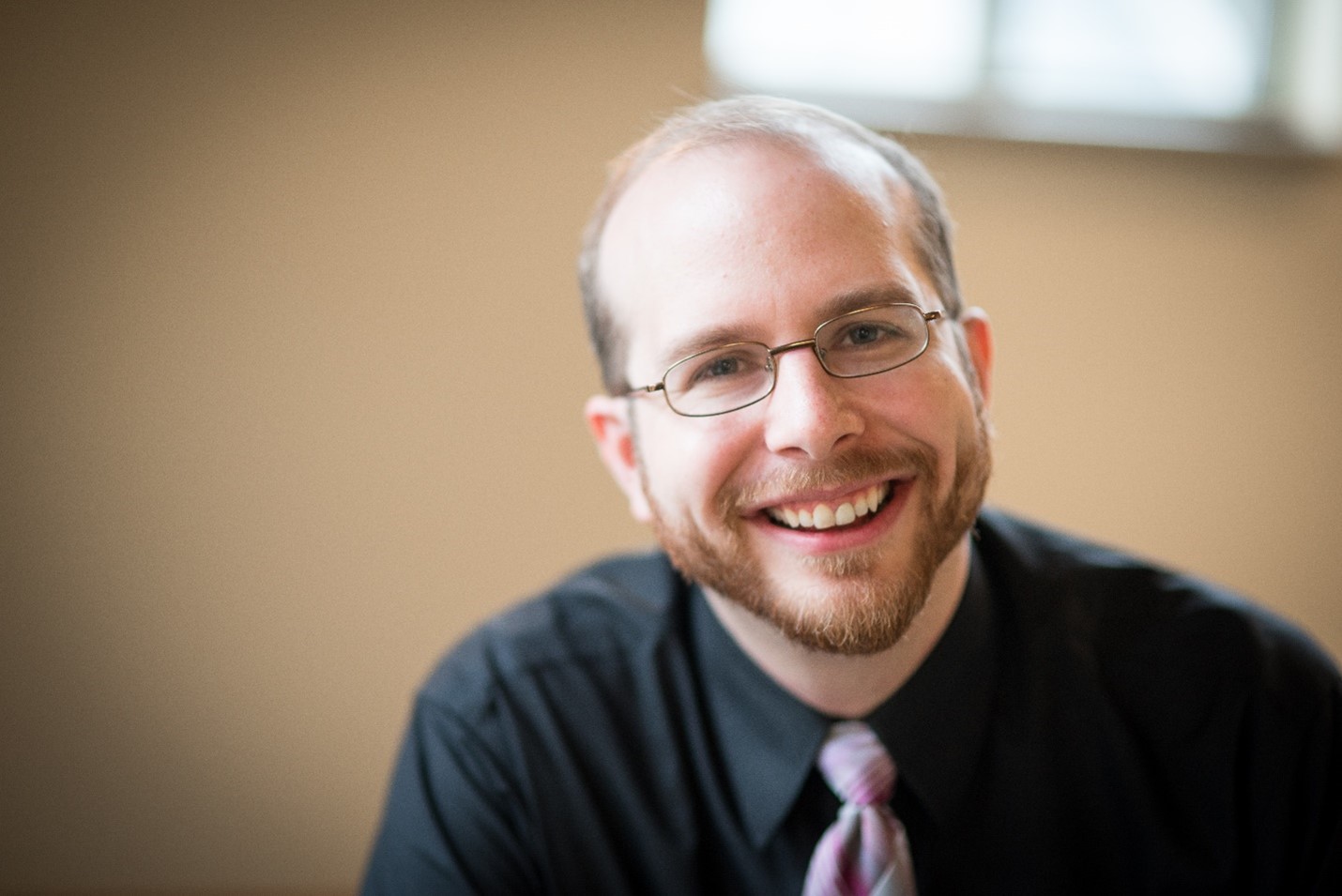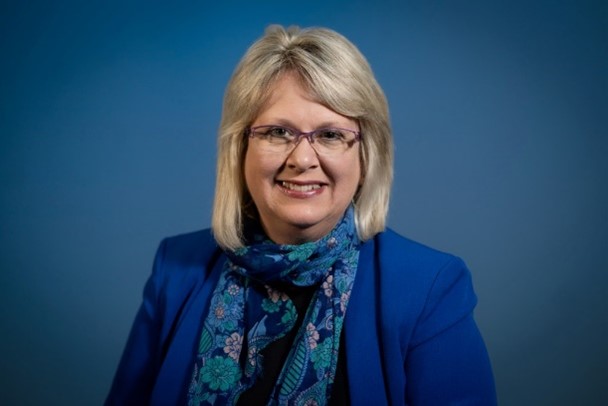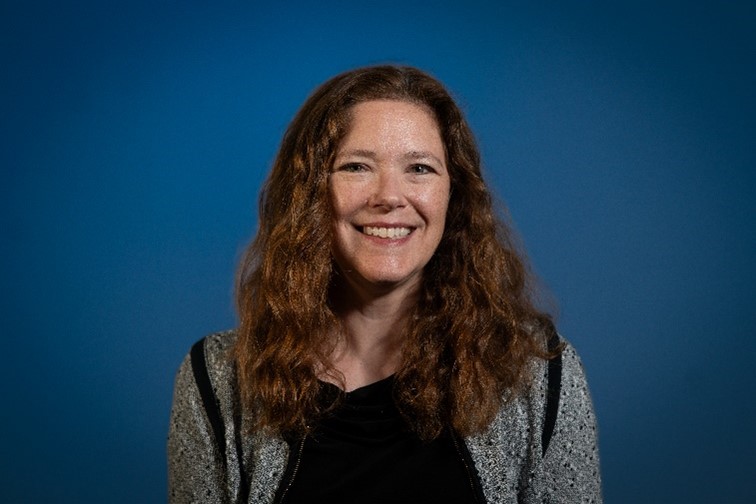Best Practices for Online Teaching and Learning
A professional development opportunity for faculty teaching in online
collaborative programs administered by Office of Online and Professional Learning Resources.
Network and engage with faculty, instructional designers, and
media staff to share and discuss best practices in online teaching and learning.

Tim Taylor
Tim Taylor is the Co-Founder and President of America Succeeds, bringing a unique background of executive, nonprofit, and public policy experience to the organization. Prior to launching America Succeeds, he served as the founding president of Colorado Succeeds.
Tim began his career on Capitol Hill as a Senior Legislative Assistant to Congressman Saxby Chambliss (GA). After relocating to Colorado in 1998, he served as an independent political consultant, Director of Public Relations and Government Affairs for the Colorado Health Care Association, and founder of Open Fairways—a nonprofit dedicated to improving the lives of at-risk and underprivileged children through the game of golf.
Tim is a member of the Aspen Global Leadership Network and the X Prize Brain Trust for Learning & Society. He was named one of Getting Smart’s “60 People Shaping the Future of K-12 Education,” has appeared on NPR’s Talk of the Nation, and presents frequently at national education events, including SXSW EDU and ASU+GSV.
Tim is a graduate of Randolph-Macon College in Virginia and earned a Master’s degree in International Affairs from George Washington University. He is an avid outdoorsman and live music fanatic. Tim lives in Denver, Colorado, with his wife, Clare, and their Boykin Spaniel.

Nicole Simonson
Nicole Simonson DNP, RN is the Director of RN-to-BSN Completion Programs and Clinical Associate Professor at the University of Wisconsin-Milwaukee School of Nursing. She received her Baccalaureate in Science of Nursing degree from Columbia College of Nursing, Master’s in Science of Nursing with an emphasis in Nurse Education at Kaplan University, and Doctoral in Nursing Practice- Nurse Executive Track at the UWM.
Dr. Simonson has 11 years of teaching experience. She has taught within the undergraduate, direct entry MN, and RN-to-BSN completion programs. Dr. Simonson has taught several courses throughout the nursing programs, including leadership, capstone, healthcare informatics, and genetics and genomics in healthcare.
Dr. Simonson’s scholarship focuses on nurse education, specifically competency-based education, RN to BSN completion, professional development, and interprofessional collaboration. She is dedicated to promoting innovation within undergraduate nursing through curriculum and faculty development.

Nathan Ewings
Nathan Ewings is an instructional designer at the Office of Online & Professional Learning Resources (OPLR). He has been in the field of education for 20+ years working in both private and public domains. He has collaborated on the development of undergraduate, graduate, competency-based, and certificate programs in his time with OPLR. He has followed AI closely since the release of ChatGPT and has experimented with a variety of models, tools, and features. He’s both optimistic and cautious about AI’s impact on education and society.

Rich Freese
Dr. Rich Freese has been educating students of all ages, interests, and backgrounds and teaching in a variety of settings since 2004: face-to-face and online college courses, workshops and lecture recitals, one-on-one lessons and consultations. He’s passionate about finding and creating freely available educational resources, using low-stakes assessments to give students freedom to explore, scaffolding high-stakes assessments, and balancing course time between core material and students’ personal and scholarly interests. As an instructional designer with UW-Madison’s Center for Teaching, Learning & Mentoring, Rich enjoys learning more about instructors’ courses and brainstorming ideas to advance the craft of teaching. As a UW Independent Learning instructor with UW-Superior, Rich is privileged to help students from all over the world make their own musical discoveries.
In addition to the field of teaching and learning, Rich’s academic focus involves creating and analyzing music and digital media; his music has been performed throughout the United States. Outside of education and music/media, pursuits and hobbies include art, reading, video games, and spending time with family.

Amy Lane
Amy Lane is an experienced Instructional Designer at the Universities of Wisconsin Office of Online and Professional Learning Resources (OPLR), with a passion for enhancing online educational experiences. She has worked with the BSN@Home and MS-IT Management collaborative programs and various courses within the UW Flexible Option program. Amy’s experience in higher education includes online teaching experience at the Masters and Doctoral level. Amy is interested in the Scholarship of Teaching of Learning (SoTL) to improve student learning, faculty development, assessment, Universal Design, and high-impact practices. She holds a Doctoral Degree in Educational Leadership from St. Mary’s University in Minneapolis and MS degree in Counseling and Human Resource Development from South Dakota State University along with a master’s certificate in Instructional Design.

Jennifer Jaworski
As an instructional designer with the Universities of Wisconsin Office of Online and Professional Learning Resources (OPLR), Jennifer Jaworski brings to the team instructional design expertise with an emphasis on and extensive background in online learning. She works with faculty in the Online Collaboratives’ MS-Health and Wellness Management program as well as Contracted Services. Jennifer’s areas of interest include evidence-based instruction, student learning experience (LX), high-impact learning practices, multimedia learning theory, faculty development, and universal design. She holds a Masters in Teaching degree from the University of Chicago as well as a master’s certificate in Instructional Design.

Erin Bauer
A seasoned professional with over 25 years of experience in strategic planning, product development, and project management, Erin is currently serving as a Lecturer at the University of Wisconsin-Green Bay for Geopolitical Systems in the Sustainable Management master’s program. Specializing in sustainable policy development and critical decision-making and analysis, her course emphasizes environmental, social, and governance (ESG) factors and integrates AI to enhance learning content to align with modern geopolitical impacts, trends, and engagement processes. Erin has previously led innovative development and operational initiatives in both corporate and non-profit organizations, collaborating with cross-functional teams to develop benchmarking tools, omni-channel content, industry research, custom digital platforms, and business solutions to serve Fortune 500 clients. Erin’s leadership and teaching style is dedicated to fostering collaboration, leveraging systems-thinking, and delivering impactful results that drive organizational growth and improvement.
| Time | Event |
|---|---|
| 1:00- 1:50 |
Keynote SpeakerWhat if the most valuable skills in today’s economy aren’t the ones being taught in courses?In a rapidly evolving workforce, durable skills—like communication, critical thinking, collaboration, and adaptability—consistently rank as top priorities among employers. Yet, these essential competencies are often underrepresented in traditional education systems. This session will explore new data, share insights from leading employers and states, and present actionable strategies for integrating durable skills into education systems. If we act now, we can redefine what readiness means—and ensure every student graduates not just with a diploma, but with the durable skills that unlock opportunity for a lifetime. |
| 2:00 - 2:30pm |
Breakout Session ITelehealth TEACH Curriculum | Deborah WalrathThe UW Oshkosh College of Nursing presents Technology, Education, Access, Communities, and Healthcare (TEACH) innovation project which reduces barriers to accessing healthcare in rural Wisconsin by providing residents with a well-prepared nursing workforce to meet their telehealth needs. Through an academic-practice partnership between the University of Wisconsin Oshkosh College of Nursing and ThedaCare, the future nursing workforce are educated on telehealth skills to improve rural chronic illness outcomes. Higher rates of disease and few health care providers, combined with service provision challenges of low population density regions, creates the triple threat to health care access for Wisconsin rural residents. Students from Accel 418 Communities and Fall UG Communities participated in Canvas Telehealth Curriculum, utilizing the DHHS Telehealth Best Practice Guidelines for Telehealth (2022), simulated virtual experience and home visits to use acquired skills to provide direct care to underserved, chronically ill patients. Home visits were conducted by UW CON faculty, UWO Nursing Students and TC at Home Health Nurses. Curriculum approach in CANVAS will be presented as adopted by the BSN at Home Communities course 454. Additionally, a sustainable and sharable telehealth resource HUB was developed and accessible for external nurses, community members, administrators, collegial partners and UW CONs to enhance understanding of telehealth. Fundamentals of Competency-Based Education | Nicole SimonsonSince its launch in 2014, the UW Flexible Option has championed the principles of competency-based education (CBE), focusing on assessing individual student understanding and tailoring educational experiences to meet specific learning needs. We aim to expand the knowledge of CBE beyond UW Flexible to other academic programs. This presentation introduces foundational concepts of CBE, exploring its flexibility and personalized approach that empowers learners to demonstrate mastery at their own pace. Using AI to Build Critical Thinking and Scalable Assignments | Erin BauerUsing artificial intelligence (AI) in learning evokes a myriad of feelings including fear, excitement, skepticism, and optimism. In the dynamic landscape of teaching in the 21st century, the integration of AI has opened new avenues for enhancing pedagogy and student engagement. This presentation explores the transformative potential of AI in developing critical thinking skills and creating shorter, scalable assignments tailored for both in-person and asynchronous online classes. By leveraging AI tools, educators can design assignments that not only challenge students intellectually but also adapt to diverse learning paces and styles. From Months to Minutes: Using AI to Level-Up Course Interactivity | Nathan EwingsTrue or False – Creating interactive experiences in online courses has gotten easier with AI? …True! In this session, I’ll discuss how AI can be used add interactive and engaging elements to your course. Individuals can now create in minutes what previously would have taken weeks or months. I’ll showcase interactive elements from simple to robust that have been embedded in courses. I’ll also discuss risks associated with increasing interactivity and using AI to do so. |
| 2:40 - 3:10pm |
Breakout Session IIConsistency and Transparency: Enhancing Program Design and Assessment | Eileen Horn & Sue StalewskiAs one of the first programs offered through UW Flexible Option, UW Milwaukee’s Health Sciences degree has a long history of success as a CBE program. To keep success going and grow retention rates, UW Milwaukee sought to review the curriculum and assessments and refresh the student experience. Academic Director Sue Stalewski identified six courses that students take early in the program and partnered with OPLR to achieve this goal. OPLR created and implemented a consistent template that featured campus branding and TILT-inspired content design. Throughout the six courses Sue, the faculty, and instructional designers incorporated additional best practices designed to promote retention and student satisfaction. For example, there are short, success-oriented assessments in each course. The goal is to encourage early success and address transferable skills such as use of APA style, AI literacy, writing without plagiarism, and career exploration. In this session we will share project goals and discuss the process used to refresh six courses in six months. We will share our strategic thinking about designing assessments for self-paced CBE students. We will answer questions like: How were current assessments evaluated? How were refresh tasks prioritized? Is it easy for faculty to use the template? Storytelling that Sticks: Engage, Inspire, and Make Learning Last | Amy Lane & Jennifer JaworskiJoin us for an interactive session on Storytelling for Learning, where we’ll explore how structured narratives enhance student comprehension, retention, and critical thinking. Drawing on research from the Princeton Neuroscience Institute and communication experts, we’ll uncover how storytelling activates multiple areas of the brain transforming dry facts into meaningful connections. This session will equip you with powerful storytelling methods such as simulation, case studies, problem-based learning, and digital storytelling. You’ll gain practical strategies to create and integrate stories at every level of your course from overarching narratives to lesson-level anecdotes and reflective activities. Scaffolding Open Educational Resource Implementation | J Richard FreeseHow can we eliminate textbook costs, add more perspectives to our course materials, make course materials easy to update, and advance research, all at the same time? Open educational resources (OER) are resources for teaching, learning, and research that can be freely shared and/or edited and adapted. Many instructors recognize the value of these resources, but might feel overwhelmed determining how, and when, to incorporate them. This presentation will examine a case study of an open educational resource being created for an online music history/appreciation course with support from UW-Superior. It will outline the creation process, document support received, and offer ideas for people to incrementally create their own OERs. The presenter will demonstrate how course materials were updated while eliminating textbook costs for the course. Building Community in an Online Class | Jennifer DrakeBuilding community in a college class is essential for fostering a supportive and engaging learning environment. When students feel connected to their peers, they are more likely to participate actively in discussions, collaborate on projects, and share diverse perspectives, which enhances the overall learning experience. This becomes of particular importance when the class is designed as interdisciplinary and brings together students across many campuses and from various health professional programs. A strong community provides a valuable support system, helping students navigate academic challenges and personal difficulties, thereby reducing stress and increasing resilience. A sense of belonging boosts motivation and commitment to the course, encouraging students to participate in classes regularly and strive for success. Engaging with a community also promotes personal growth by developing social skills, empathy, and a sense of responsibility, which are crucial for both personal and professional development. Building community in an online class environment can be a particularly challenging though critical objective for the course professor. In this session, we will discuss strategies that have been successful in helping to build community within an online, asynchronous class and how they might be used in other courses. |
| 3:20 - 3:50pm |
Breakout Session IIIRevolutionizing Education: AI Tools for Deep Learning, Retention, and Comprehension | Mita Banerjee & Bill BurnettMany educators fear that AI tools will undermine critical thinking and create a generation dependent on technology. However, this presentation argues that AI, when strategically integrated into the curriculum, can actually enhance learning by fostering deeper engagement with course content. We will share examples of assignments where students were required to use AI LLMs (such as ChatGPT, Copilot, or Gemini) to answer an initial set of questions. The real learning, however, came from the reflection that followed. Students, empowered by their interaction with the AI, produced surprisingly insightful and detailed reflections on the AI output, demonstrating a deeper understanding of the material than typically observed. Incorporating Artificial Intelligence material into existing undergraduate and graduate-level courses | Pritosh Kumar & Michelle GaborThis presentation outlines a strategic approach for incorporating artificial intelligence content into undergraduate and graduate courses to enhance educational outcomes and prepare students for a changing workforce. It addresses challenges such as knowledge gaps among instructors, time constraints, and resource limitations, while proposing pilot integrations that take minimum effort and deliver maximum educational outcomes. 3-on-3 Course Revision | Robert Kuzoff, Astrid Ramos and Ian StoneOver three successive semesters our team tackled revision of three courses in the Applied Biotechnology MS program. Although the courses varied in subject matter, enrollment sizes, and longevity in the program, we applied similar strategies to each effort. Our goal was to try to see each course through the eyes of our students and, to the best of our ability, perceive how our courses felt to enrolled students on a week-by-week basis. We used a combination of qualitative and quantitative tools to locate stress points, identify challenges, and detect weeks in which student performance waned. Qualitative data was extracted from an exhaustive review of student evaluations, e-mails, and comments on assignments. Quantitative data took the form of a set of metrics used to measure student performance on a weekly basis throughout each course and overall. Once palpable stress points were identified in each course, we proposed, counter-proposed, debated, and eventually settled on corrective actions that we felt best resolved the perceived obstacles to student success. Course modifications took the form of: (1) revising instructions to steer students away from counterproductive efforts; (2) recording additional explanatory videos that demonstrated essential skills; (3) preparing handouts with step-by-step instructions for technically challenging assignments; and (4) adjusting the agenda for strategic weeks to keep the cognitive burden and workload more evenly balanced over the semester. Naturally, our best guesses were ultimately just guesses, so we are again gathering qualitative and quantitative data to assess the impact of these revisions on student success. |
| 4:00 - 4:30pm |
AI Panel | John Kuraski & Kyle Sky |
Keynote Presentation
What if the most valuable skills in today’s economy aren’t the ones being taught in courses? | Tim Taylor
In a rapidly evolving workforce, durable skills—like communication, critical thinking, collaboration, and adaptability—consistently rank as top priorities among employers. Yet, these essential competencies are often underrepresented in traditional education systems. This session will explore new data, share insights from leading employers and states, and present actionable strategies for integrating durable skills into education systems. If we act now, we can redefine what readiness means—and ensure every student graduates not just with a diploma, but with the durable skills that unlock opportunity for a lifetime.
Breakout Sessions
Fundamentals of Competency-Based Education | Nicole Simonson
Since its launch in 2014, the UW Flexible Option has championed the principles of competency-based education (CBE), focusing on assessing individual student understanding and tailoring educational experiences to meet specific learning needs. We aim to expand the knowledge of CBE beyond UW Flexible to other academic programs. This presentation introduces foundational concepts of CBE, exploring its flexibility and personalized approach that empowers learners to demonstrate mastery at their own pace.
Participants will gain insights into applying components of CBE in their courses and programs. They will build upon their current teaching and learning strategies to enhance the applicability of learning in real-world contexts. The presentation will delve into the role of authentic assessments, which help to evaluate student performance in a meaningful way. It also examines the importance of continuous feedback in guiding learners on their educational paths. We will examine the essential components of competency-based assessment and outcomes that form the backbone of successful CBE programs.
Beyond theoretical knowledge, the session will provide practical strategies for effectively implementing CBE across various learning modalities, including both online and traditional classroom settings. Participants will learn how to tailor these approaches to fit their unique program structures, equipping them with tools to adapt and enhance their curriculum. These strategies will enrich educational programs, ensuring they meet the diverse needs of today’s learners while effectively assessing and promoting mastery of competencies.
Presentation Outcomes:
By attending this session, participants will be able to:
- Explain the foundational concepts of competency-based education.
- Examine effective strategies for integrating competency-based approaches within educational programs.
- Discover practical methods for implementing competency-based education principles into semester-based curricula.
From Months to Minutes: Using AI to Level-Up Course Interactivity | Nathan Ewings
True or False – Creating interactive experiences in online courses has gotten easier with AI? …True! In this session, I’ll discuss how AI can be used add interactive and engaging elements to your course. Individuals can now create in minutes what previously would have taken weeks or months. I’ll showcase interactive elements from simple to robust that have been embedded in courses. I’ll also discuss risks associated with increasing interactivity and using AI to do so.
Presentation Outcomes:
By attending this session, participants will be able to:
- Discuss the benefits and rationale for including interactive learning objects in courses.
- Identify at least three types of interactive learning objects that can enhance student engagement in online courses.
- Articulate the key considerations and recommendations for implementing interactive content into courses.
Scaffolding Open Educational Resource Implementation | Rich Freese
How can we eliminate textbook costs, add more perspectives to our course materials, make course materials easy to update, and advance research, all at the same time?
Open educational resources (OER) are resources for teaching, learning, and research that can be freely shared and/or edited and adapted. Many instructors recognize the value of these resources, but might feel overwhelmed determining how, and when, to incorporate them.
This presentation will examine a case study of an open educational resource being created for an online music history/appreciation course with support from UW-Superior. It will outline the creation process, document support received, and offer ideas for people to incrementally create their own OERs. The presenter will demonstrate how course materials were updated while eliminating textbook costs for the course.
The presentation will include active participation for participants to evaluate their current course materials and brainstorm ideas to create open resources.
Presentation Outcomes:
By attending this session, participants will be able to:
- Identify key components of open educational resources (OER).
- Document an example of OER creation.
- Develop ways to replace paid textbooks with freely available resources.
Storytelling that Sticks: Engage, Inspire, and Make Learning Last | Amy Lane & Jennifer Jaworski
Are your lectures packed with information but lack engagement? Do you want your students to not only understand but remember and apply what they learn? Storytelling is the key.
Join us for an interactive session on Storytelling for Learning, where we’ll explore how structured narratives enhance student comprehension, retention, and critical thinking. Drawing on research from the Princeton Neuroscience Institute and communication experts, we’ll uncover how storytelling activates multiple areas of the brain transforming dry facts into meaningful connections.
This session will equip you with powerful storytelling methods such as simulation, case studies, problem-based learning, and digital storytelling. You’ll gain practical strategies to create and integrate stories at every level of your course from overarching narratives to lesson-level anecdotes and reflective activities.
By the end of this session, you’ll walk away with a toolbox of prompts to foster student reflection, deepen learning connections, and create memorable learning experiences. Don’t miss this opportunity to make your teaching more dynamic and impactful!
Who Should Attend?
Faculty members, instructional designers, and educators who want to enrich their teaching strategies with storytelling.
Key Takeaways:
- Why storytelling enhances learning and retention
- Research-backed insights on storytelling and brain engagement
- Practical strategies for using storytelling in lectures, discussions, and assessments
- Ready-to-use prompts for reflection and deeper learning connections
- Transform your teaching- tell a story that sticks!
Presentation Outcomes:
By attending this session, participants will be able to:
- Explain how storytelling enhances learning and improves long-term retention.
- Apply practical storytelling strategies in the design of lectures, discussions, and assessments across disciplines.
- Develop and implement reflection prompts that help students connect personally with course content and reinforce key concepts.
Using AI to Build Critical Thinking and Scalable Assignments | Erin Bauer
Using artificial intelligence (AI) in learning evokes a myriad of feelings including fear, excitement, skepticism, and optimism. In the dynamic landscape of teaching in the 21st century, the integration of AI has opened new avenues for enhancing pedagogy and student engagement. This presentation explores the transformative potential of AI in developing critical thinking skills and creating shorter, scalable assignments tailored for both in-person and asynchronous online classes. By leveraging AI tools, educators can design assignments that not only challenge students intellectually but also adapt to diverse learning paces and styles.
We will delve into practical applications of AI, highlighting how these technologies can be employed to create interactive and personalized learning experiences using real assignment examples. These demonstrate how AI can assist in generating complex analytical skills, scale in scope over the semester, and make the learning content both personalized and easier to access. Furthermore, we will discuss the scalability of AI-driven assignments for workers to communicate with leadership or executives to influence decision-making – which are critical skills in modern workforce development. The presentation will include research from the presenter’s position at an international trade association, examples of prompt engineering, and assignments used in the Spring 2025 semester for the MSMGT-760 Geopolitical Systems class in Sustainable Management master’s degree program. Attendees will leave equipped with strategies to incorporate AI into their curriculum, ultimately enriching the educational experience and better preparing students for the complexities of the modern world.
Presentation Outcomes:
By attending this session, participants will be able to:
- Glean insights from current global research on workforce skill development needs from Fortune 500 level respondents and their supply chains
- Assess the transformation of previous assignments formats into shorter, scalable assignments
- Build templates and prompt engineering examples for assignments that promote critical thinking and personalized content
Telehealth TEACH Curriculum | Deborah Walrath
The UW Oshkosh College of Nursing presents Technology, Education, Access, Communities, and Healthcare (TEACH) innovation project which reduces barriers to accessing healthcare in rural Wisconsin by providing residents with a well-prepared nursing workforce to meet their telehealth needs. Through an academic-practice partnership between the University of Wisconsin Oshkosh College of Nursing and ThedaCare, the future nursing workforce are educated on telehealth skills to improve rural chronic illness outcomes. Higher rates of disease and few health care providers, combined with service provision challenges of low population density regions, creates the triple threat to health care access for Wisconsin rural residents. Students from Accel 418 Communities and Fall UG Communities participated in Canvas Telehealth Curriculum, utilizing the DHHS Telehealth Best Practice Guidelines for Telehealth (2022), simulated virtual experience and home visits to use acquired skills to provide direct care to underserved, chronically ill patients. Home visits were conducted by UW CON faculty, UWO Nursing Students and TC at Home Health Nurses. Curriculum approach in CANVAS will be presented as adopted by the BSN at Home Communities course 454. Additionally, a sustainable and sharable telehealth resource HUB was developed and accessible for external nurses, community members, administrators, collegial partners and UW CONs to enhance understanding of telehealth.
Consistency and Transparency: Enhancing Program Design and Assessment | Eileen Horn and Sue Stalewski
As one of the first programs offered through UW Flexible Option, UW Milwaukee’s Health Sciences degree has a long history of success as a CBE program. To keep success going and grow retention rates, UW Milwaukee sought to review the curriculum and assessments and refresh the student experience. Academic Director Sue Stalewski identified six courses that students take early in the program and partnered with OPLR to achieve this goal. OPLR created and implemented a consistent template that featured campus branding and TILT-inspired content design. Throughout the six courses Sue, the faculty, and instructional designers incorporated additional best practices designed to promote retention and student satisfaction. For example, there are short, success-oriented assessments in each course. The goal is to encourage early success and address transferable skills such as use of APA style, AI literacy, writing without plagiarism, and career exploration. In this session we will share project goals and discuss the process used to refresh six courses in six months. We will share our strategic thinking about designing assessments for self-paced CBE students. We will answer questions like: How were current assessments evaluated? How were refresh tasks prioritized? Is it easy for faculty to use the template?
Building Community in an Online Class | Jennifer Drake
Building community in a college class is essential for fostering a supportive and engaging learning environment. When students feel connected to their peers, they are more likely to participate actively in discussions, collaborate on projects, and share diverse perspectives, which enhances the overall learning experience. This becomes of particular importance when the class is designed as interdisciplinary and brings together students across many campuses and from various health professional programs. A strong community provides a valuable support system, helping students navigate academic challenges and personal difficulties, thereby reducing stress and increasing resilience. A sense of belonging boosts motivation and commitment to the course, encouraging students to participate in classes regularly and strive for success. Engaging with a community also promotes personal growth by developing social skills, empathy, and a sense of responsibility, which are crucial for both personal and professional development. Building community in an online class environment can be a particularly challenging though critical objective for the course professor. In this session, we will discuss strategies that have been successful in helping to build community within an online, asynchronous class and how they might be used in other courses.
Revolutionizing Education: AI Tools for Deep Learning, Retention, and Comprehension | Mita Banerjee and Bill Burnett
Many educators fear that AI tools will undermine critical thinking and create a generation dependent on technology. However, this presentation argues that AI, when strategically integrated into the curriculum, can actually enhance learning by fostering deeper engagement with course content. We will share examples of assignments where students were required to use AI LLMs (such as ChatGPT, Copilot, or Gemini) to answer an initial set of questions. The real learning, however, came from the reflection that followed. Students, empowered by their interaction with the AI, produced surprisingly insightful and detailed reflections on the AI output, demonstrating a deeper understanding of the material than typically observed.
Incorporating Artificial Intelligence material into existing undergraduate and graduate-level courses | Pritosh Kumar and Michelle Gabor
This presentation outlines a strategic approach for incorporating artificial intelligence content into undergraduate and graduate courses to enhance educational outcomes and prepare students for a changing workforce. It addresses challenges such as knowledge gaps among instructors, time constraints, and resource limitations, while proposing pilot integrations that take minimum effort and deliver maximum educational outcomes.
3-on-3 Course Revision | Robert Kuzoff, Astrid Ramos and Ian Stone
Over three successive semesters our team tackled revision of three courses in the Applied Biotechnology MS program. Although the courses varied in subject matter, enrollment sizes, and longevity in the program, we applied similar strategies to each effort. Our goal was to try to see each course through the eyes of our students and, to the best of our ability, perceive how our courses felt to enrolled students on a week-by-week basis. We used a combination of qualitative and quantitative tools to locate stress points, identify challenges, and detect weeks in which student performance waned. Qualitative data was extracted from an exhaustive review of student evaluations, e-mails, and comments on assignments. Quantitative data took the form of a set of metrics used to measure student performance on a weekly basis throughout each course and overall. Once palpable stress points were identified in each course, we proposed, counter-proposed, debated, and eventually settled on corrective actions that we felt best resolved the perceived obstacles to student success. Course modifications took the form of: (1) revising instructions to steer students away from counterproductive efforts; (2) recording additional explanatory videos that demonstrated essential skills; (3) preparing handouts with step-by-step instructions for technically challenging assignments; and (4) adjusting the agenda for strategic weeks to keep the cognitive burden and workload more evenly balanced over the semester. Naturally, our best guesses were ultimately just guesses, so we are again gathering qualitative and quantitative data to assess the impact of these revisions on student success.
Registration will open soon!
Oops! We could not locate your form.